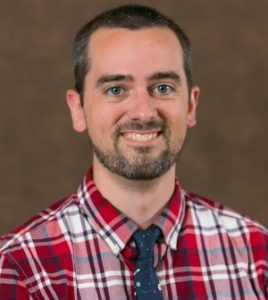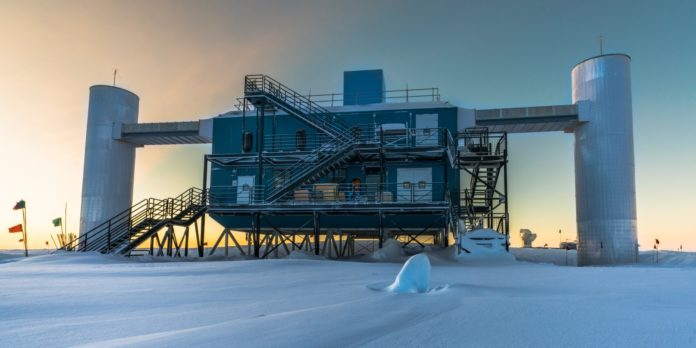Dr. Frank McNally is looking for an answer that hasn’t yet been found.
“We’re working on the frontier, and we don’t know what we’ll find out there,” he said. “New physics always comes from pushing the boundaries.”
For Dr. McNally, an assistant professor of physics at Mercer University, that boundary is out in the far reaches of the universe.
He is looking for sources of cosmic rays, charged particles from space. These sources are likely to be some of the highest-energy objects in the universe.
So far, they’ve been elusive.
“The fact that we’ve struggled for over 100 years to answer this question means the problem is really hard,” Dr. McNally said.
Last year, he successfully applied for Mercer’s membership in the international IceCube Collaboration, which includes about 300 scientists from 50 institutions in 12 countries. At the heart of the collaboration is the IceCube Neutrino Observatory, located at the South Pole.
IceCube is the first detector of its kind. It uses thousands of sensors buried deep beneath the Antarctic ice to search outer space for high-energy neutrinos — tiny neutral particles that provide information that helps scientists examine phenomena like exploding stars, gamma-ray bursts and black holes.
Tracking cosmic rays back to their origins is hard because the charged particles curve as they travel through magnetic fields in space. But because neutrinos are neutral, they travel through the universe to Earth in a straight line, making it easier to identify those high-energy sources.
The same mechanism IceCube uses to see neutrinos also makes it sensitive to the particles produced in cosmic ray air showers. Air showers occur when a cosmic ray smashes into the atmosphere, causing a cascade of particles and radiation.

Dr. McNally works to reconstruct cosmic ray properties from these air showers. While cosmic rays are difficult to track, they still carry valuable information. Knowing the composition of cosmic rays can tell scientists about potential sources and what the universe may look like around them.
For eight weeks this summer, Dr. McNally worked with two computational science students who used IceCube data and collaborative resources to write a computer program intended to use machine-learning techniques to help identify the composition of cosmic rays.
The first step has been testing the program to see if it can correctly identify a cosmic ray’s energy — something scientists already can estimate. They’ve had some luck with this, but it’s only the beginning.
“Cosmic rays represent the most energetic particles that we’ve ever seen,” Dr. McNally said. “And so, if you want to study physics at the highest energies, you could keep building bigger and bigger colliders that smash things together faster and faster, which is what we’re doing, but you can also look for these super high-energy objects in space and try and study them.
“So this is a major mission of IceCube and something that really has me motivated.”
Dr. McNally first got involved with IceCube as a student participating in a Research Experiences for Undergraduates program at the University of Wisconsin-Madison, the lead institution responsible for the maintenance and operations of the detector.
But his interest in astrophysics dates back further.
“I did a summer program through the Earthwatch Institute in high school where we talked about particles moving faster than the speed of light and using them to observe the universe, and I was like, that can’t be real. I’m in,” Dr. McNally said. “And I didn’t realize at the time how in I would be.”
In addition to his research with IceCube, Dr. McNally had the opportunity to collaborate with Georgia Tech to put on an IceCube Masterclass, a one-day research experience for high school students. He’s also part of the newly founded Multimessenger Diversity Network, a National Science Foundation-funded program that aims to improve diversity, equity and inclusion in multimessenger astronomy.
Dr. McNally’s work is largely online and analytical, so he hasn’t been to the observatory in the South Pole. But he’d like to go.
The chance may be there in the future. The National Science Foundation, which provided the primary funding for IceCube with assistance from partners around the world, recently approved funding for a $37 million upgrade.
In addition, Mercer will receive $15,000 to fund undergraduate student research this year as part of a three-year $10.6 million National Science Foundation award to IceCube.
“We’ve been so successful that the funding seems to be there for extensions, and with that comes the opportunity to potentially go, which would be really cool,” Dr. McNally said. “A good friend of mine spent weeks on a Swedish icebreaker as an undergraduate testing equipment for the original project. Hopefully there will be similar opportunities for undergraduate engagement with the upgrade.”










